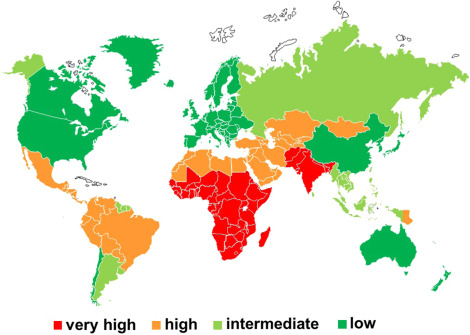Elsevier,
The Neuroscience of Depression
Genetics, Cell Biology, Neurology, Behaviour, and Diet
2021, Pages 405-414
This chapters provides a thorough examination, including demographic characteristics, sleep history, medical and psychiatric conditions, lifestyles, past experiences of self-help, and pharmaceutical interventions should contribute to efforts to identify any underlying causes of either anxiety, depression, or sleep disorders.
Overviews the Ebola virus, endemic in Central Africa and cause of severe hemorrhagic fevers. Although no licensed treatment is available to treat disease, vaccines have recently been licensed in Europe, the USA and elsewhere. The goal of SDG 3.3 is 3.3 the end the epidemics of AIDS, tuberculosis, malaria and neglected tropical diseases and combat hepatitis, water-borne diseases and other communicable diseases.
A review on dementia in low-income and middle-income countries, in the context of SDGs 3 and 10, focusing specifically on culturally appropriate treatments and the need for more effectiveness trials on adapted interventions.
The article examines the link between physical activity earlier in life and a lower risk of dementia later in life.
This content aligns with Goal 3: Good Health as well as Goal 10: Reduced Inequalities by providing an overview of the viruses responsible for immunodeficiency syndromes like AIDS, highlighting their mechanism of action and targets for therapy.
This content supports the SDG Goal 3 by highlighting that management of chronic hepatitis B requires careful consideration of treatment indications given the requirement for long-term therapy in most patients. Options include nucleo(s)tide analogs (NA) and pegylated interferon alfa (PEG-IFN), both with their own advantages and limitations.
This content supports the SDG Goal 3 and 6 by describing hepatitis A virus and hepatitis E virus, which are enterically transmitted and the most common cause of viral hepatitis worldwide.
The nature of armed conflict throughout the world is intensely dynamic. Consequently, the protection of non-combatants and the provision of humanitarian services must continually adapt to this changing conflict environment. Complex political affiliations, the systematic use of explosive weapons and sexual violence, and the use of new communication technology, including social media, have created new challenges for humanitarian actors in negotiating access to affected populations and security for their own personnel.
Complementary Feeding (CF) involves an array of behaviors ranging from producing or purchasing food to preparing and feeding it to the child. Nutrition-specific and nutrition-sensitive interventions support different dimensions of improved CF, including dietary diversity, adequate frequency and daily intake, food hygiene, responsive feeding, and parenting practices. Beyond messages specific to what to feed young children, interventions to improve CF could address norms related to early child development; family dynamics; water, sanitation, and hygiene (WASH)
Elsevier,
Aaditya Chaturvedi, Bhanu Pandey, Aneet Kumar Yadav, Shubham Saroj,
Chapter 5 - An overview of the potential impacts of global climate change on water resources,
Editor(s): Binota Thokchom, Pengpeng Qiu, Pardeep Singh, Parameswar K. Iyer,
Water Conservation in the Era of Global Climate Change,
Elsevier,
2021,
Pages 99-120,
ISBN 9780128202005
This chapter advances SDG 6 and SDG 13 by highlighting the connection between climate change and water resources. It describes some of the most sinificant efforts taken to mitigate climate change.

